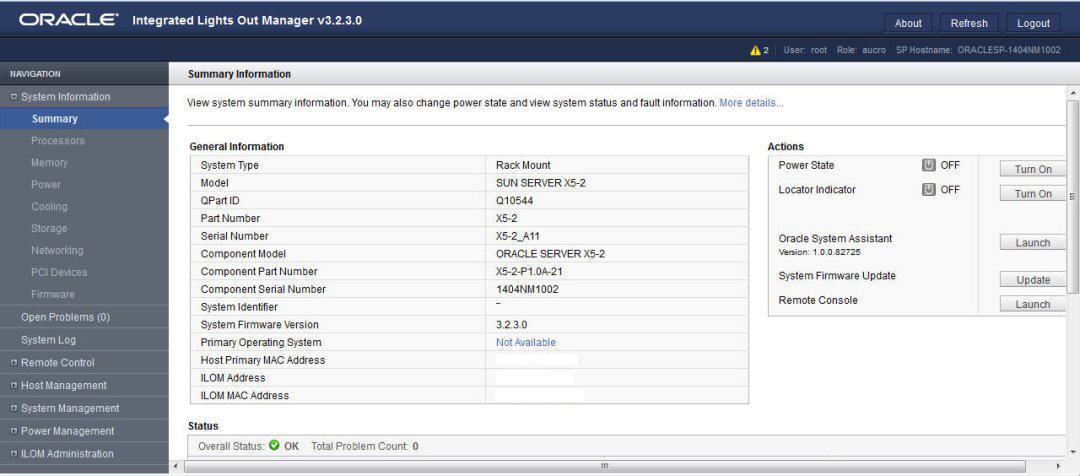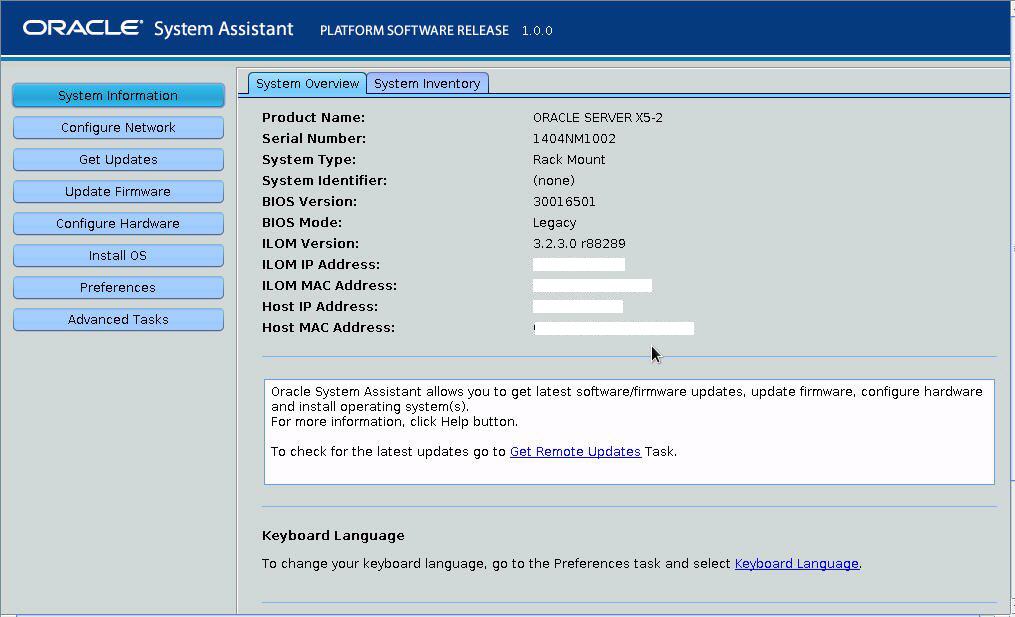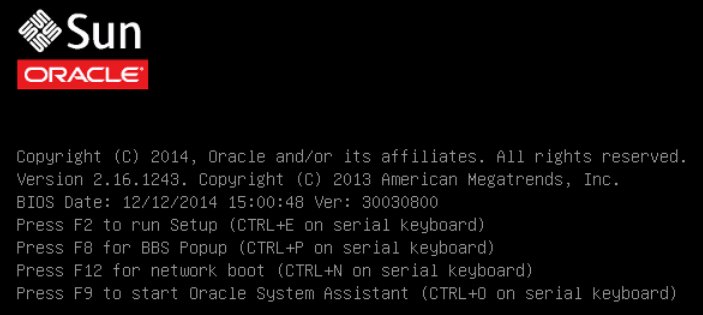Install a Linux OS Using Oracle System Assistant
Before You Begin
Ensure that the following requirements are met:
-
Perform the procedures in Preparing to Install a Linux Operating System.
-
If you want to configure the boot drive (that is, the storage drive onto which you are installing the OS) for RAID, you must do so before you install the Linux OS. For instructions on how to configure RAID on your server, refer to Configuring Storage Drives for Operating System Installation in Oracle Server X5-2L Installation Guide.
-
Ensure
that the installation media is available to boot.
-
For Distribution CD/DVD, insert the Linux media (CD labeled number 1 or the single DVD) into the local or remote CD/DVD-ROM drive.
-
For ISO image, ensure that the ISO images are available and that the Oracle ILOM Remote System Console Plus application has mounted the ISO image.
For additional information about how to set up the installation media, see Selecting the Boot Media Option.
-
-
To launch Oracle System Assistant directly from the Oracle ILOM web
interface (recommended), perform the following steps; otherwise proceed to
Step 3.
-
Log in to the Oracle ILOM web interface.
The Oracle ILOM Summary Information page appears.

-
Ensure that the server is powered off.
The server power state is indicated in the Actions panel.
If the server is powered on, a message appears instructing you to power off the host before attempting to launch Oracle System Assistant.
-
In the Actions panel on the Oracle ILOM Summary Information page,
click the Oracle System Assistant Launch button.
The Oracle ILOM Remote Console Plus window appears, and the server is powered on. After a few moments, the Oracle System Assistant System Overview screen appears.

- Proceed to Step 4.
-
Log in to the Oracle ILOM web interface.
-
To launch Oracle System Assistant locally using BIOS, perform the
following steps:
- Connect a VGA monitor, USB keyboard, and mouse to the server.
- Ensure that the server is powered off.
- Power on the server.
-
When prompted in the BIOS screen, press the F9 key to launch
Oracle System Assistant.

Note - The Oracle Assistant Overview screen might take a while to appear. Please be patient.
-
To update your version of Oracle System Assistant, click the Get Updates
button in Oracle System Assistant.
This action ensures that the server has the latest version of Oracle System Assistant installed before you begin the OS installation.
Note - Server web access is required to update Oracle System Assistant. -
To update the server firmware, click the Update Firmware button.
This action ensures that the server has the latest firmware and BIOS before you begin the OS installation.
-
To install the Linux OS, click the Install OS button.
The Operating System Installation screen appears.
- From the Supported OS drop-down list, select the Linux OS (Oracle Linux, Red Hat Enterprise Linux, or SUSE Linux Enterprise Server) that your want to install.
- In the Current BIOS mode portion of the screen, select the BIOS mode (UEFI or Legacy BIOS) that you want to use for the Linux OS installation.
-
In the Select Your Install Media Location portion of the screen, select
the location of the installation media.
This is the location of the OS distribution media. The options are CD/DVD and Network.
Note - Oracle System Assistant does not support Preboot eXecution Environment (PXE) installs. - In the Boot Disk portion of the screen, select the device to which the Linux OS will be installed.
-
Click Installation Details.
The Installation Details dialog appears.
-
In the Installation Details dialog, deselect any items that you do not
want to install.
Note - In the Installation Details dialog, the OS and Drivers options are mandatory and cannot be deselected. - At the bottom of the Install Operating System screen, click the Install OS button.
-
Follow the prompts until the installation is finished.
The server boots.
-
Perform the Linux operating system post installation tasks as required.
For post installation tasks, see the following sections: